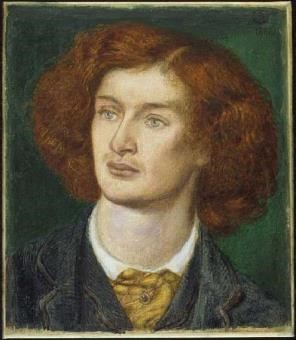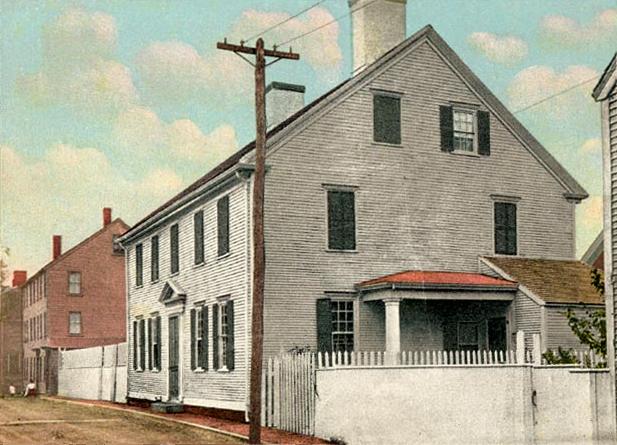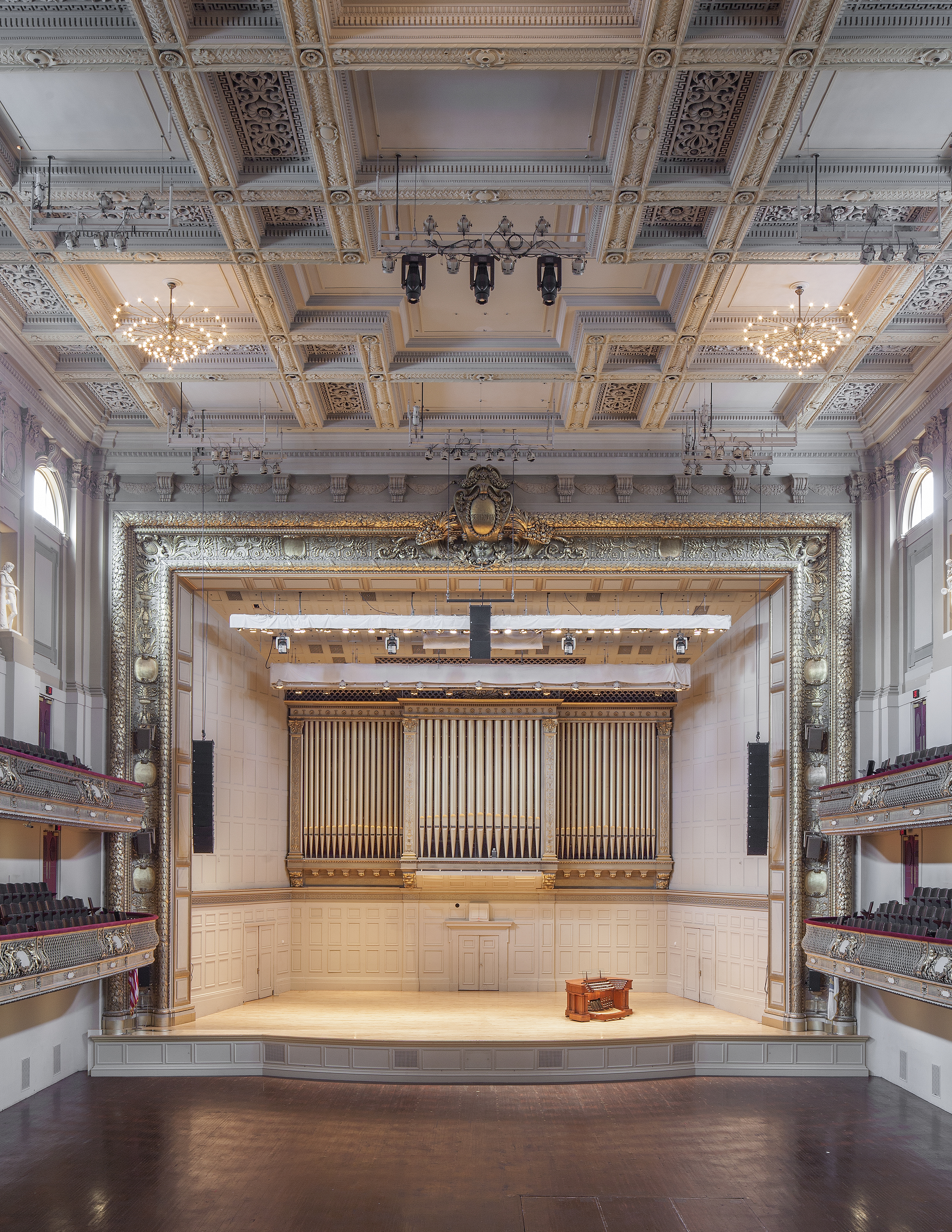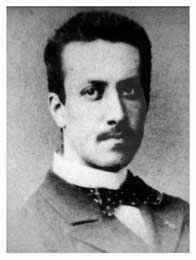|
Percy Lee Atherton
Percy Lee Atherton (September 25, 1871 – March 8, 1944) was a Harvard educated American composer and a music teacher. His musical compositions include songs, chamber music, and several comic operas. Early life Atherton was born into a prominent Boston, Massachusetts, family. His father, William Atherton (1821–1891) had been a partner since 1852 of "Atherton, Stetson and Company", dealers in leather and one of Boston's most successful business at the time. His father was also a vice president of the Home Savings Bank, and a director of the First National Bank of Boston which was founded in 1864. His mother was Mary Edwards Dwight (1838–1915), the daughter of William R. Dwight And Mary Warren Fiske of Brooklyn, New York, and the great great granddaughter of Jonathan Edwards. His paternal uncle, Samuel Atherton (1815–1895), is credited to having greatly improved the financial standing of the family, having established himself in business as a retail dealer in boots a ... [...More Info...] [...Related Items...] OR: [Wikipedia] [Google] [Baidu] |
Boston
Boston (), officially the City of Boston, is the capital city, state capital and List of municipalities in Massachusetts, most populous city of the Commonwealth (U.S. state), Commonwealth of Massachusetts, as well as the cultural and financial center of the New England region of the United States. It is the 24th-List of United States cities by population, most populous city in the country. The city boundaries encompass an area of about and a population of 675,647 2020 U.S. Census, as of 2020. It is the seat of Suffolk County, Massachusetts, Suffolk County (although the county government was disbanded on July 1, 1999). The city is the economic and cultural anchor of a substantially larger metropolitan area known as Greater Boston, a metropolitan statistical area (MSA) home to a census-estimated 4.8 million people in 2016 and ranking as the tenth-largest MSA in the country. A broader combined statistical area (CSA), generally corresponding to the commuting area and includ ... [...More Info...] [...Related Items...] OR: [Wikipedia] [Google] [Baidu] |
University Of Music And Performing Arts Munich
The University of Music and Performing Arts Munich (german: Hochschule für Musik und Theater München), also known as the Munich Conservatory, is a performing arts conservatory in Munich, Germany. The main building it currently occupies is the former ''Führerbau'' of the NSDAP, located at Arcisstraße 12, on the eastern side of the Königsplatz. Teaching and other events also take place at Luisenstraße 37a, Gasteig, the Prinzregententheater (theatre studies), and in Wilhelmstraße (ballet). Since 2008, the Richard Strauss Conservatory ( de), until then independent, has formed part of the university. History In 1846, a private institution called the Royal Conservatory of Music (''Königliches Conservatorium für Musik'') was founded, and in 1867, at the suggestion of Richard Wagner, this was transformed by King Ludwig II into the Royal Bavarian Music School (''Königliche bayerische Musikschule''), financed privately by Ludwig II until gaining the status of a state inst ... [...More Info...] [...Related Items...] OR: [Wikipedia] [Google] [Baidu] |
Alfred Edward Housman
Alfred Edward Housman (; 26 March 1859 – 30 April 1936) was an English classical scholar and poet. After an initially poor performance while at university, he took employment as a clerk in London and established his academic reputation by publishing as a private scholar at first. Later Housman was appointed Professor of Latin at University College London and then at the University of Cambridge. He is now acknowledged as one of the foremost classicists of his age and has been ranked as one of the greatest scholars at any time. His editions of Juvenal, Manilius, and Lucan are still considered authoritative. In 1896 he emerged as a poet with '' A Shropshire Lad'', a cycle in which he poses as an unsophisticated and melancholy youth. After a slow start, this captured the imagination of young readers, its preoccupation with early death appealing to them especially during times of war. In 1922 his ''Last Poems'' added to his reputation, which was further enhanced by the large num ... [...More Info...] [...Related Items...] OR: [Wikipedia] [Google] [Baidu] |
Henry Wadsworth Longfellow
Henry Wadsworth Longfellow (February 27, 1807 – March 24, 1882) was an American poet and educator. His original works include " Paul Revere's Ride", '' The Song of Hiawatha'', and '' Evangeline''. He was the first American to completely translate Dante Alighieri's ''Divine Comedy'' and was one of the fireside poets from New England. Longfellow was born in Portland, Maine, which was then still part of Massachusetts. He graduated from Bowdoin College and became a professor there and, later, at Harvard College after studying in Europe. His first major poetry collections were ''Voices of the Night'' (1839) and ''Ballads and Other Poems'' (1841). He retired from teaching in 1854 to focus on his writing, and he lived the remainder of his life in the Revolutionary War headquarters of George Washington in Cambridge, Massachusetts. His first wife, Mary Potter, died in 1835 after a miscarriage. His second wife, Frances Appleton, died in 1861 after sustaining burns when her dress cau ... [...More Info...] [...Related Items...] OR: [Wikipedia] [Google] [Baidu] |
Algernon Charles Swinburne
Algernon Charles Swinburne (5 April 1837 – 10 April 1909) was an English poet, playwright, novelist, and critic. He wrote several novels and collections of poetry such as '' Poems and Ballads'', and contributed to the famous Eleventh Edition of the ''Encyclopædia Britannica''. Swinburne wrote about many taboo topics, such as lesbianism, sado-masochism, and anti-theism. His poems have many common motifs, such as the ocean, time, and death. Several historical people are featured in his poems, such as Sappho ("Sapphics"), Anactoria ("Anactoria"), and Catullus ("To Catullus"). Biography Swinburne was born at 7 Chester Street, Grosvenor Place, London, on 5 April 1837. He was the eldest of six children born to Captain (later Admiral) Charles Henry Swinburne (1797–1877) and Lady Jane Henrietta, daughter of the 3rd Earl of Ashburnham, a wealthy Northumbrian family. He grew up at East Dene in Bonchurch on the Isle of Wight. The Swinburnes also had a London home at Whiteha ... [...More Info...] [...Related Items...] OR: [Wikipedia] [Google] [Baidu] |
William Watson (poet)
Sir William Watson (2 August 185811 August 1935) was an English poet, popular in his time for the celebratory content, and famous for the controversial political content, of his verse. Initially popularly recognised, he was then neglected because of changing tastes. Poet Watson was born in Burley, in present-day West Yorkshire, and was brought up in Liverpool, where his father had moved for business. In 1880 he published his first book, ''The Prince's Quest'', a poem showing the influence of Keats and Tennyson. It was republished in 1893. In 1884 appeared ''Epigrams of Art, Life and Nature'', which already showed the mature Watson's characteristic restraint and concision. He became a prolific poet of the 1890s, and a contributor to ''The Yellow Book'', though without "decadent" associations, and on the traditionalist wing of English poetry. His reputation was established in 1891, with the publication of "Wordsworth's Grave", and the appearance in ''The Fortnightly Review'', Au ... [...More Info...] [...Related Items...] OR: [Wikipedia] [Google] [Baidu] |
The Smile Of Her I Love (NYPL Hades-1933906-1999017)
''The'' () is a grammatical article in English, denoting persons or things that are already or about to be mentioned, under discussion, implied or otherwise presumed familiar to listeners, readers, or speakers. It is the definite article in English. ''The'' is the most frequently used word in the English language; studies and analyses of texts have found it to account for seven percent of all printed English-language words. It is derived from gendered articles in Old English which combined in Middle English and now has a single form used with nouns of any gender. The word can be used with both singular and plural nouns, and with a noun that starts with any letter. This is different from many other languages, which have different forms of the definite article for different genders or numbers. Pronunciation In most dialects, "the" is pronounced as (with the voiced dental fricative followed by a schwa) when followed by a consonant sound, and as (homophone of the archaic p ... [...More Info...] [...Related Items...] OR: [Wikipedia] [Google] [Baidu] |
Heinrich Heine
Christian Johann Heinrich Heine (; born Harry Heine; 13 December 1797 – 17 February 1856) was a German poet, writer and literary critic. He is best known outside Germany for his early lyric poetry, which was set to music in the form of '' Lieder'' (art songs) by composers such as Robert Schumann and Franz Schubert. Heine's later verse and prose are distinguished by their satirical wit and irony. He is considered a member of the Young Germany movement. His radical political views led to many of his works being banned by German authorities—which, however, only added to his fame. He spent the last 25 years of his life as an expatriate in Paris. Early life Childhood and youth Heine was born on 13 December 1797, in Düsseldorf, in what was then the Duchy of Berg, into a Jewish family. He was called "Harry" in childhood but became known as "Heinrich" after his conversion to Lutheranism in 1825. Heine's father, Samson Heine (1764–1828), was a textile merchant. His mother Pe ... [...More Info...] [...Related Items...] OR: [Wikipedia] [Google] [Baidu] |
Thomas Bailey Aldrich
Thomas Bailey Aldrich (; November 11, 1836 – March 19, 1907) was an American writer, poet, critic, and editor. He is notable for his long editorship of ''The Atlantic Monthly'', during which he published writers including Charles W. Chesnutt. He was also known for his semi-autobiographical book ''The Story of a Bad Boy'', which established the "bad boy's book" subgenre in nineteenth-century American literature, and for his poetry. Biography Early life and education Thomas Bailey Aldrich was born in Portsmouth, New Hampshire on November 11, 1836, to Elias T. Aldrich and Sara Aldrich, née Bailey. When Aldrich was a child, his father moved to New Orleans, but after 10 years, Aldrich was sent back to Portsmouth to prepare for college. This period of his life is partly described in his semi-autobiographical novel ''The Story of a Bad Boy'' (1870), in which "Tom Bailey" is the juvenile hero. Early career Aldrich abandoned college preparations after his father's death in 1849. At a ... [...More Info...] [...Related Items...] OR: [Wikipedia] [Google] [Baidu] |
Symphony Hall, Boston
Symphony Hall is a concert hall located at 301 Massachusetts Avenue in Boston, Massachusetts, opened in 1900. Designed by the architectural firm McKim, Mead and White, it was built for the Boston Symphony Orchestra, which continues to make the hall its home. It can accommodate an audience of 2,625. The hall was designated a U.S. National Historic Landmark in 1999 and is a pending Boston Landmark. It was then noted that "Symphony Hall remains, acoustically, among the top three concert halls in the world (sharing this distinction with the Amsterdam Concertgebouw and Vienna's Musikvereinsaal), and is considered the finest in the United States." and Symphony Hall, located one block from Berklee College of Music to the north and one block from the New England Conservatory to the south, also serves as home to the Boston Pops Orchestra as well as the site of many concerts of the Handel and Haydn Society. History and architecture On June 12, 1899, ground was broken and cons ... [...More Info...] [...Related Items...] OR: [Wikipedia] [Google] [Baidu] |
New England Conservatory Of Music
The New England Conservatory of Music (NEC) is a private music school in Boston, Massachusetts. It is the oldest independent music conservatory in the United States and among the most prestigious in the world. The conservatory is located on Huntington Avenue along the Avenue of the Arts near Boston Symphony Hall. NEC is home to 750 students pursuing undergraduate and graduate studies, with 1400 more in its Preparatory School and School of Continuing Education. It offers bachelor's degrees in classical performance, contemporary improvisation, composition, jazz, musicology, and music theory, as well as graduate degrees in accompaniment, conducting, and vocal pedagogy. The conservatory has also partnered with Harvard University and Tufts University to create joint double-degree, five-year programs and provide multi-passionate students access to Boston's premier academic resources. The New England Conservatory's faculty and alumni comprise nearly fifty percent of the Bost ... [...More Info...] [...Related Items...] OR: [Wikipedia] [Google] [Baidu] |
Charles Marie Widor
Charles-Marie-Jean-Albert Widor (21 February 1844 – 12 March 1937) was a French organist, composer and teacher of the mid-Romantic era, most notable for his ten organ symphonies. His Toccata from the fifth organ symphony has become one of the best known and most often performed works for organ. As of 2022, he is the longest-serving organist of Saint-Sulpice in Paris, a role he held for 63 years (January 1870 – 31 December 1933). He also was organ professor at the Paris Conservatory from 1890 to 1896 (following César Franck) and then he became professor of composition at the same institution, following Théodore Dubois. Widor was a prolific composer, writing music for organ, piano, voice and ensembles. Apart from his ten organ symphonies, he also wrote three symphonies for orchestra and organ, several songs for piano and voice, four operas and a ballet. He was one of the first composers to use the term "symphony" for some of his organ compositions, helped in this by t ... [...More Info...] [...Related Items...] OR: [Wikipedia] [Google] [Baidu] |



_(14760896391)_(1).jpg)
.png)
.jpg)



